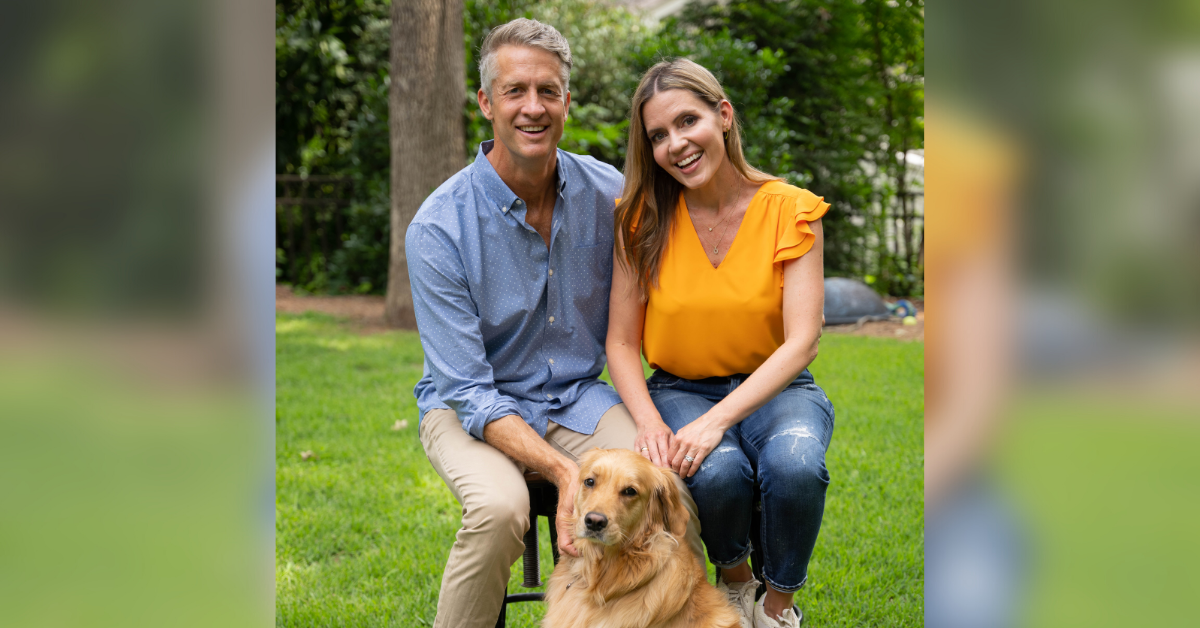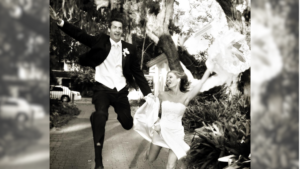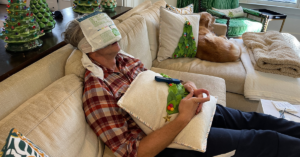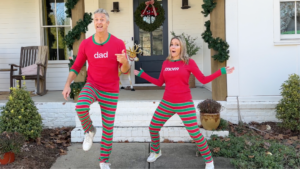We’ve all done it – looked into our dog’s eyes and wished we knew what they were thinking.
Our dog Sunny meshes so well with our family that sometimes, I’ll admit, I just assume she’s really a human walking around in a dog suit. She’s truly a member of our family.
But unlike my chatty, busy children, Sunny is most often found sleeping on top of an air vent. I’ll spend way too much time wondering if she’s lonely or depressed. I’ll ask her, literally speak words into the air as if she can respond, “Are you okay, my love? You seem sad. Are you happy? What can I do to make your life better?”
Usually, she responds by licking her butt.
We enlisted the help of our dear friend, Victoria Stilwell. She is the dog-training mastermind behind the hit show It’s Me or the Dog, the Victoria Stilwell Academy, and many other projects. She’s a big deal in the dog-training world and we were so excited to have her on this week’s podcast.
Life Skills for Dogs
If you’re guilty of treating your dog like a human, she says you shouldn’t feel guilty at all. They have complex thoughts and brains that are not that far removed from our human brains.
As our kids get older, Penn and I have been very focused on the life skills we can teach them. You’ve heard us talk about this before – we want to give them the space to learn the things they will need in the real world. So, when Victoria told us it’s important for humans to teach our dogs life skills, everything clicked.
Just as with people, life skills help dogs navigate the world. Victoria says some of the most important life skills for dogs are not commands like sit, lie down, or roll over. Instead, they need to know things like how to wait, stay quiet when necessary, or settle down.
The key to a happy dog is enrichment, but it’s also important to know that an enriched life doesn’t look the same for every dog. For Sunny, I think an enriched life is when she can lounge around the house, enjoying our company and the occasional doggy playdate, and getting as many “pets” as she wants.
For other dogs, that could look different. They might enjoy long walks around your neighborhood. (That is definitely not Sunny’s vibe.) Victoria says the best thing is to figure out what works for your dog and what works for you.
Finding the Perfect Fit and What Happens When it Doesn’t Work Out
It can be hard having a dog that doesn’t click with your lifestyle. Years ago, we adopted a dog, Ruby. She was a great dog – I felt safe with her, and she loved our family. But soon after we brought her home she started biting people. We brought in three different trainers, a dog behaviorist, we did medical tests.. still she was aggressive to anyone not in our immediate family. Her bites were becoming more dangerous and it was incredibly heartbreaking to have to surrender her back to the rescue organization.
I get emotional thinking about her, not because I wonder if we did everything we could for her (I believe we did), but because no matter what we tried, it just didn’t work. I’m one of those competitive, hyper-productive people that carries this false belief that “you can do anything you put your mind to”. It simply isn’t the case.
I’ve never worked harder for something. I spent hours a day training her for two solid years, and still she lunged and bit anyone who came close to us.
I carried around a lot of shame about this because it felt like we failed Ruby. Even some people on the internet blamed me, “You’re anxious so you passed that along to your dog.”
Even now, years later, I feel guilty.
We talked about all of this and so much more with Victoria on our latest podcast. She tells us how we can tell if our dog loves us, what being “right-pawed” means, and what their behaviors can tell us about their mood and well-being.
We hope you enjoy.
Have you seen those bumper stickers that say, “tell your dog I said hi”? Well, tell your dog the Holderness family says hello, and please give them a treat and a belly rub from us.
- Acast: https://open.acast.com/
public/streams/ 618c3caaa322d1001350082c/ episodes/ 652d67ecd40c9700126bb080.mp3 - Apple Podcasts: https://podcasts.
apple.com/us/podcast/the- holderness-family-podcast/ id1378725018?i=1000631572465 - Spotify: https://open.spotify.
com/episode/ 6pvqAQDHssFwiM1GoTrnc8?si= 275fd501f0d04a90
- Amazon: https://music.amazon.
com/podcasts/094464e9-aad9- 4b09-8ee8-248c76b48bd6/ episodes/ff831a79-d5c6-431b- 9c92-8e77e20fc0e2/the- holderness-family-podcast- what-are-our-dogs-trying-to- tell-us-with-victoria- stillwell-feat-dr-jessica- pierce




